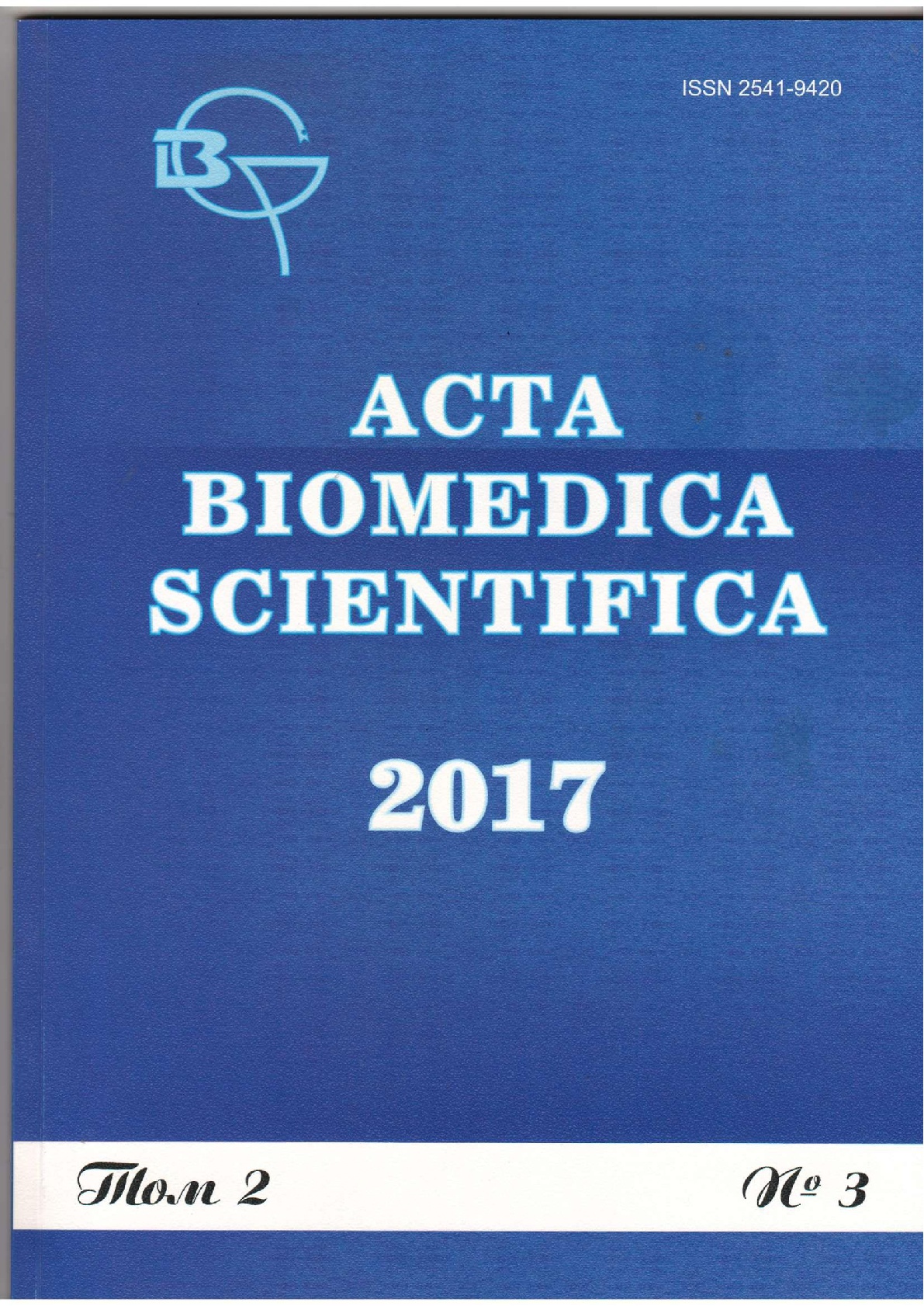Irkutsk, Irkutsk region, Russian Federation
Irkutsk, Irkutsk region, Russian Federation
The encoded portion of the complete genomes of 46 strains of the genotype 6 of hepatitis C virus through bioinformat-ics RDP programs complex group of 6 recombinants strains was identified, in which 7 recombination sites were fixed. Strains correspond to the three-recombinant HCV subtypes: 6a, 6b and 6I. For each of the identified recombinant we defined parent strains from which they can be obtained. Three recombinants were obtained from parent strains of the same subtype (homologous inside subgenotypic recombination). For the remaining three recombinants parent strains were members of three different subtypes (between subgenotypic recombination). In one strain we identified a unique recombination site in a highly conservative NS3 gene. Most of the recombination sites occurred in the region of the structural genes C, E1 and E2, and in the area of non-structural genes NS5a and NS5b. In the recombinant strain DQ480518-6a two recombination site were identified. One site is located in the structural and nonstructural genes (E2 + NS1 + NS2), and a second one in non-structural region. Dimensions of recombination sites can vary from 86 to 1072 nucleotide bases. The study identified “hot spots” of recombination in the strains of genotype 6 of hepatitis C virus. The recombinants were found in the population of the three countries: the United States (from the serum of an immigrant), Hong Kong and China.The encoded portion of the complete genomes of 46 strains of the genotype 6 of hepatitis C virus through bioinformat-ics RDP programs complex group of 6 recombinants strains was identified, in which 7 recombination sites were fixed. Strains correspond to the three-recombinant HCV subtypes: 6a, 6b and 6I. For each of the identified recombinant we defined parent strains from which they can be obtained. Three recombinants were obtained from parent strains of the same subtype (homologous inside subgenotypic recombination). For the remaining three recombinants parent strains were members of three different subtypes (between subgenotypic recombination). In one strain we identified a unique recombination site in a highly conservative NS3 gene. Most of the recombination sites occurred in the region of the structural genes C, E1 and E2, and in the area of non-structural genes NS5a and NS5b. In the recombinant strain DQ480518-6a two recombination site were identified. One site is located in the structural and nonstructural genes (E2 + NS1 + NS2), and a second one in non-structural region. Dimensions of recombination sites can vary from 86 to 1072 nucleotide bases. The study identified “hot spots” of recombination in the strains of genotype 6 of hepatitis C virus. The recombinants were found in the population of the three countries: the United States (from the serum of an immigrant), Hong Kong and China.
hepatitis C virus, genotype 6 strains of hepatitis C virus, software RDP methods, recombination sites, “hot spots” of recombination
1. KalininaOV (2015). Hepatitis C virus: variability mechanisms, classification, evolution [Virus gepatita C: mekhanizmy izmenchivosti, klassifikatsiya, evolyutsiya]. Voprosy virusologii, (5), 5-10.
2. ChistyakovaMV, GovorinAV, RadaevaEV, Gonchar-ovaEV, MorozovaEI (2012). Cardiohemodynamic disor-ders in patients with chronic hepatitis [Kardiogemodi-namicheskie narusheniya u bol’nykh s khronicheskimi gepatitami]. Sibirskiy meditsinskiy zhurnal (Irkutsk), (1), 51-54.
3. BecherP, TautzN (2011). RNA recombination in pestiviruses - cellular RNA sequences in viral genomes highlight the role of host factors for viral persistence and lethal disease. RNA Biology, 8(2), 216-224.
4. BertrandY, TopelM, ElvаngA, MelikW, JohanssonM(2012). First dating of a recombination event in mamma-lian tick-borne flaviviruses. PLoS One, 7(2), e31981.
5. BoniMF, PosadaD, FeldmanMW (2007). An exact nonparametric method for inferring mosaic structure in sequence triplets. Genetics, 176(2), 1035-1047.
6. BruenTC, PhilippeH, BryantD (2006). A simple and robust statistical test for detecting the presence of recombination. Genetics, 172(4), 2665-2681.
7. ChooQL, KuoG, WeinerAJ, OverbyLR,Brad-leyDW,HoughtonM (1989). Isolation of a cDNA clone derived from a blood-borne non-A, non-B viral hepatitis genome. Science, 244(4902), 359-362.
8. European Association for Study of Liver (2014). EASL Clinical Practice Guidelines: Management of hepa-titis C virus infection. J. Hepatol., 60(2), 392-420.
9. GibbsMJ, ArmstrongJS, GibbsAJ (2000). Sis-ter-scanning: a Monte Carlo procedure for assessing signals in recombinant sequences. Bioinformatics, 16(7), 573-582.
10. HusonDH, BryantD (2006). Application of phylo-genetic networks in evolutionary studies. Mol. Biol. Evol.,23(2), 254-267
11. SmithMJ (1992). Analyzing the mosaic structure of genes. J. Mol. Evol., 34(2), 126-129.
12. SmithDB, BukhJ, KuikenC, MuerhoffAS, RiceCM, StapletonJT, SimmondsP (2014). Ex-panded classification of hepatitis C virus into 7 genotypes and 67 subtypes: updated criteria and genotype assignment web resource. Hepatology, 59(1), 318-327.
13. ThompsonJD, HigginsDG, GibsonTJ (1994). CLUSTAL W: improving the sensitivity of progressive multiple sequence alignment through sequence weighting, position-specific gap penalties and weight matrix choice. Nucl. Acids Res., (22), 4673-4680.
14. World Health Organization (2014). Fact sheet No164





